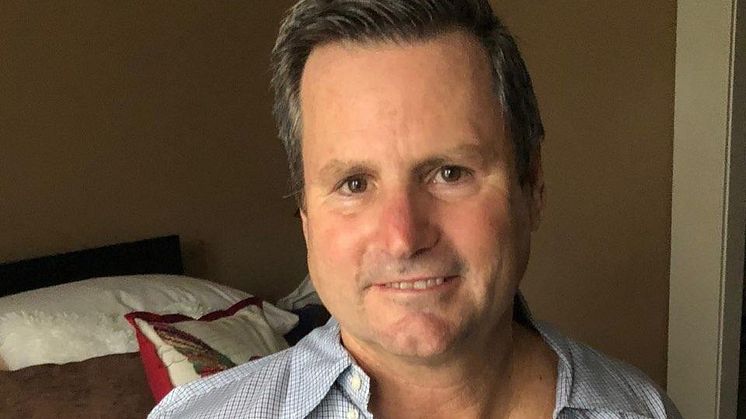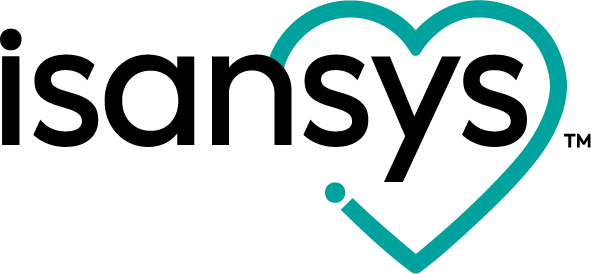
Blog post -
Patient Status Engine Captures Real-time Health Data From the Comfort of Your Own Home
Mike Wilson has seen the future of patient monitoring – in fact he’s worn it and it’s available now.
Current hospital practice means patients need to remain in hospital post-surgery or go back regularly to hospital after they have been discharged to have their vital signs taken and analysed. Healthcare professionals can lose valuable insight into a patient’s condition once they leave hospital and patients can often feel neglected – they believe that being out of sight means being out of mind.
However, this doesn’t have to be the case. Mike and his wife Liz had the opportunity to try the Patient Status Engine, a wireless patient monitoring platform which measures ECG, heart rate, respiration rate, temperature, blood pressure and body position. The platform, which is a fully regulated CE-Marked and FDA approved medical device, can help clinicians monitor patient’s vital signs remotely 24 hours a day via a computer screen or a handheld mobile device. The patient’s health data is captured with smart body-worn wireless sensors, relayed to a tablet computer running the Isansys Gateway app and then through to the Central Monitoring Unit. This allows clinicians to see their patient’s health status throughout the day and night, monitoring trends and alerts provided by the integrated Early Warning Scores to enhance the care and safety of their patients.
The intuitive, robust and low-cost nature of the PSE makes it easy to monitor patients at home with the same level of precision and confidence as in hospital, and because the tablet handles all the communications (using Bluetooth, Wi-Fi and 3G/4G connectivity) the system is installed in minutes within a patient’s home.
Mike, 59, was given the opportunity to be monitored with the PSE after he underwent open heart surgery on the 10th October this year.
He was born with congenital bicuspid aortic valve instead of a tricuspid aortic valve and lived with the knowledge that at some time he would need a replacement valve fitted. The operation has a high success rate but his wife Liz, an RN experienced in cardiac recovery and intensive care nursing, knowing the risks and the after-care Mike would require following the procedure, was naturally concerned.
The operation went smoothly, and Mike was moved to the cardiovascular step-down unit from the cardiovascular ICU after just two nights. He was recovering well but whilst in the step-down unit he suffered from post-operative atrial fibrillation. The night before he had a normal heart rate in the 80s but then, out of the blue, whilst Liz was visiting, his heartrate escalated to 110 with an inverted T wave. Liz decided to take his temperature which was 99.5 oral. She was concerned about the risk of sepsis. She called the duty RN who said she would call the cardiologist and update her later when she’d got home.
Liz called the hospital the next morning and the nurse explained that Mike’s ECG looked good and that his temperature was normal. However, at 6am the next morning Mike went into atrial fibrillation. He was put on an antiarryhthmic IV drip and quickly his heart rhythm reverted to normal.
When Liz arrived at the hospital, Mike recalled: “All of a sudden I didn’t feel very good. The alarms were going off. A bunch of nurses ran in and told me that I was in afib.” He said he was scared that he was never going to get to leave the hospital.
Liz was already aware of the Patient Status Engine (PSE) and Lifetouch cardiac sensor and knew if Mike had been wearing the patch in hospital the doctors and nurses could have analysed the chain of events leading up to the atrial fibrillation via the data collected by the Lifetouch.
“We missed the opportunity being that he was tethered to a simple 3 lead ECG monitor without the “SmartHealth” capabilities of the PSE,” said Liz.
Mike was discharged the following day on beta-blockers and antiarrhythmic medication wearing the Lifetouch and being monitored by the Patient Status Engine. “Wearing the sensor made me feel like I was being taken care of despite not being in the hospital,” said Mike. “I knew I could view my ECG anytime and that my heart rate was being monitored continuously.”
Liz said: “We were able to watch his heart rate trend up and saw some atrial ectopic beats appear around two hours before his cardiac meds were due. He would say, “I don’t feel very good.” I would check the ECG and his rate would be trending up and the ectopy was visible. An hour or so after the cardiac meds were administered, his rate would go down, the ectopy would disappear, and he would say, ‘I feel better.’ It was amazing.”
The PSE gateway tablet presents the Lifetouch data in several ways, one of which is a Poincare chart that visualises the R-R intervals as a scatter plot. It creates a picture of the heart rhythms in a visual, easy to read pattern. Liz was able to watch the pattern change over time from abnormal to normal around the med dosage times. “The normal heart beat rhythm on the monitor is not always as “normal and regular” as we think it is,” said Liz. “When it gets plotted on the Poincare chart it is easy to see the variability. The human eye cannot conceptualize the slight variations in the R-R intervals like the “SmartHealth” analytics in the Lifetouch can.
“This variability change may have great meaning when talking about the prediction of atrial fib. From a nurse’s point of view, the best we have is, “It looks like he is trying to go into atrial fibrillation.”
Liz also believes Mike’s temperature before he went into atrial fibrillation should not be disregarded. “We missed the opportunity to continuously monitor Mike’s temperature with the Lifetemp Patch, another sensor which makes up the PSE platform, which is a shame. There are no generally recognised associations between an increased temperature and atrial fibrillation but when one runs a temperature the heart beats faster this brings to mind a couple of questions:
1.Why was Mike running a temperature before the atrial fibrillation and not after? (Or was he always running a temperature but the medication he was prescribed for pain reduced it?)
2.What was his C-reactive protein in his blood? Researchers have shown that an elevated CRP is commonly found in patients in atrial fibrillation. Could the increased CRP lead to atrial fibrillation? If so, what can be done about this protein?”
It is now three weeks since Mike’s surgery and the cardiologist is weaning down the antiarrhythmic medication due to no atrial fibrillation being witnessed at home utilising the Patient Status Engine. Normally this would be established by a visit to the cardiologist’s office some weeks into the future when side-effects of the drug may be taking a toll on the body.
“This is good thing because we are trying to get Mike’s clotting time higher than it is so that he does not form “micro clots on his new valve,” said Liz. “The cardiologist says that weaning the medication will make it easier to raise Mike’s clotting times with less medication on board.”
Mike now has regained energy, can drive again and has gone back to work. His health is still continuously being monitored by the Lifetouch Cardiac Patch and the PSE as he goes about his day, happily returning to a normal and once-again healthy life.

